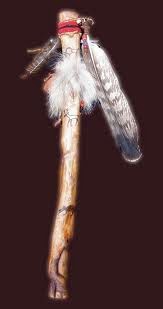 |
| Cherry Tree |
I discovered more than I ever knew while researching my latest WIP, Yellow Moon, and thought it would make for an interesting blog. I noticed our scheduled person didn't feel up to blogging today so I thought I'd step in and give you a lesson fit for an arborist. As well-intentioned as we to meet our schedules, sometimes life happens. *smile*
Oh, by the way, a Cottonwood was the sacred tree used by the Lakota for their Sun Dance because of several reasons. Known to withstand lightening and be strong, the tree has the same conical leaves after which tepees are shaped, and if you cut a larger limb crosswise, inside you'll find a perfect five-pointed star which represents the Great Spirit Bet you didn't know that, did you?
Trees didn't only have a spiritual meaning for the Northern American tribes, most had a healing property of some sort. Indians of the past didn't have doctors to run to, they counted on medicine women or men to gather healing herbs, berries and barks to ease various maladies. Here are a few I've read about.
Ash trees symbolize peace of mind and sacrifice. Digestive system ailments are aided by the bark.
Aspen trees symbolize clarity of purpose, determining and aid in overcoming fears and doubts. Those suffering from stress, allergies, eczema and neuralgia benefit from this tree.
Beech trees symbolize tolerance, past knowledge and softening criticism. Here again is another tree that aids with the digestive system, and helps wounds, ulcers and sores to heal.
The Cedar symbolizes cleansing protection, prosperity and healing. Those with respiratory problems find relief from the Cedar.
The Cherry tree symbolizes strong expression, rebirth, new awakenings and compassion. Remedies made from the Cherry aids those who suffer from colds, flu, coughs, fever, headaches and indigestion.
The Elm is a symbol of wisdom, strength of will and intuition. It provides healing salves for wounds.
The Oak symbolizes strength of character and courage, and helps blood problems, improves circulation and reduces fevers.
The Sycamore symbolizes ambition and acts as an astringent.
The Walnut tree symbolizes clarity and focus, the gathering of energy for starting new projects. Skin problems, colds and flu are treated with medicines garnered from this tree.
This is but a few of the many named, and aside from the symbolization and healing properties, many trees
 |
| Lakota Talking Stick |
I hope you've found this as interesting as I did.

No comments:
Post a Comment